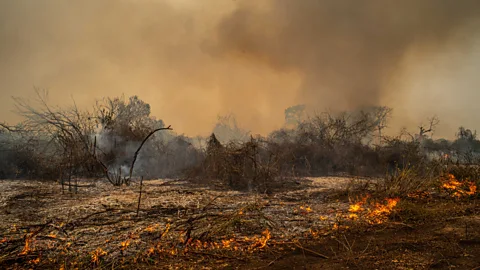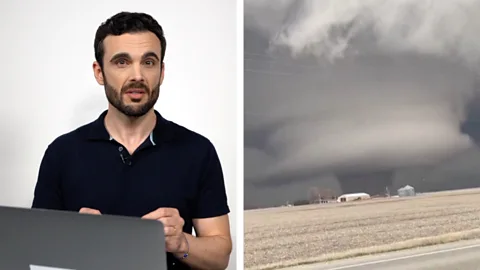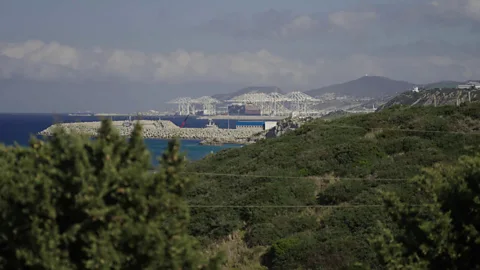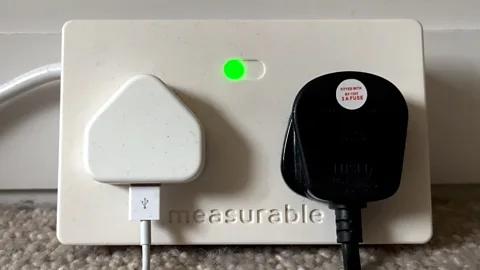How trading CO2 could save the climate
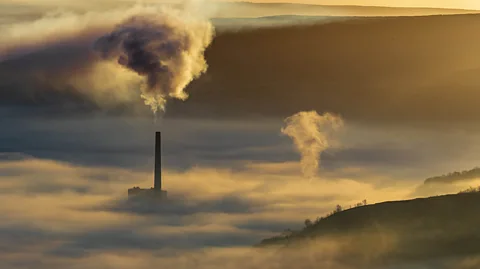 Getty Images
Getty ImagesFor its proponents, a global carbon market could significantly reduce the world's carbon emissions. But its critics say that giving polluters the option to pay for their emissions is not the answer to climate change.
In July, wildfires scorched vast swathes of North America. In Oregon, the Bootleg fire destroyed more than 400,000 acres of forest. As the trees went up in smoke, so did a large number of carbon offsets, including ones that had been bought by firms such as BP and Microsoft.
The Bootleg fire highlighted one of the flaws of the carbon offsetting market: how can we ensure the carbon removal projects we invest in will still be there in 10 years, let alone 100 years? As climate change leads to more intense wildfires and prolonged droughts over the next few decades, the question is whether these offsets are effective tools that can help us drastically reduce carbon emissions.
The largest market for carbon offsetting to date will be under discussion in November at the 26th United Nations' Climate Change Conference of the Parties (COP26), in Glasgow. Governments say carbon credits, and a global carbon market where these credits can be bought and sold, can help them achieve ambitious emissions reduction targets. But campaigners warn that such a system provides rich countries with a license to keep polluting.
Ahead of the conference, Future Planet analyses what an effective carbon market would look like, and how much it could make a dent in the world's emissions.
A global marketplace
Economists devised carbon markets as a way to increase climate ambition and lower carbon dioxide (CO2) levels in the atmosphere by creating a financial incentive to curb emissions.
The idea is, if one country pays for emissions to be cut or captured in a second country, for example by planting a forest or installing renewable energy facilities, it can count those reductions towards its own climate goals. The aim is that for every tonne of CO2 that is emitted somewhere, another tonne is captured elsewhere.
 Getty Images
Getty ImagesCountries can trade credits, which each represent one tonne of CO2, with each other in a global marketplace. Theoretically, this exchange should balance out and prevent an overall increase in emissions – provided all emissions from human activity are covered by the scheme.
Establishing a global carbon market, however, has proven to be an enormous challenge. For almost 30 years, countries have tried, and largely failed, to draw up robust rules.
The first global scheme dates back to the UN's Kyoto Protocol on climate change, which was adopted in 1997. Known as the Clean Development Mechanism (CDM), this carbon market came into operation in 2006. Under the CDM, richer countries could reduce their emissions by paying for the development of carbon-lowering projects in poorer nations, and counting these reductions as part of their own targets.
Carbon Cost
From carbon markets to flight levies, economic interventions have the potential to drastically reduce the world's carbon emissions. Carbon Cost analyses some of the most powerful measures that could reshape the way we live, and our relationship with the planet and nature.
The Kyoto Protocol also established "cap and trade" schemes, which set a limit on the overall amount of emissions that are permitted from carbon-intensive sources, such as shipping and the energy industry, at regional, national and international levels. The European Union created the world's first emissions trading system, which is based on the cap and trade principle, in 2005. According to a 2020 study, the system reduced carbon emissions by more than one billion tonnes between 2008 and 2016.
The CDM, on the other hand, effectively collapsed due to widespread concerns over environmental efficacy, corruption and human rights violations. Eighty-five percent of offset projects used by the European Union under the CDM failed to reduce emissions, a 2017 study by the European Commission found.
In 2015, 190 countries signed up to the Paris Agreement and set emissions reduction targets. Under Article 6 of the climate pact, they agreed to establish a voluntary global carbon market, intending to avoid the pitfalls that led to the collapse of the CDM.
Six years on, countries are still hammering out the rules and are some way from consensus. Ministers are hoping to make progress on the issue at the COP26 climate summit in Glasgow in November, but deep divisions remain on the design of the carbon market.
Some say the contentious issue could make or break the Paris Agreement. "This was what countries promised each other," says Cynthia Elliott, associate on the global climate programme at the World Resources Institute. "If they cannot fulfill this commitment, the Paris Agreement doesn't have the same weight."
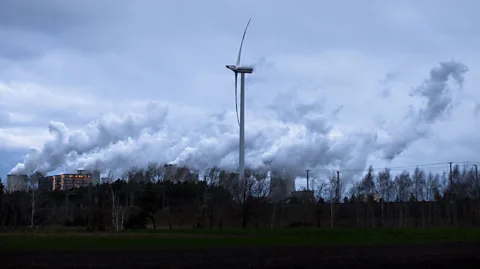 Getty Images
Getty ImagesIf done right, this trading mechanism could almost double the reduction in global emissions and make it substantially cheaper for countries to meet their Paris Agreement climate goals, according to the advocacy group Environmental Defense Fund. Offset projects could channel much needed funds to poorer countries and yield enormous benefits for climate adaptation, providing them with financial incentives to restore their forests and other biodiversity hotspots, says Lennon.
But if countries are unable to close loopholes or guarantee that the carbon market will lead to real emissions reductions, campaigners say it could do more harm than good.
The pitfalls
A major problem with current carbon market mechanisms is their "very broad approach to crediting", says Lambert Schneider, a carbon market expert at the Öko-Institut in Freiburg, . Many offset projects are approved without having to provide very high assurances that they will reduce emissions, he says.
In reality, the conditions an offset project needs to meet to actually capture a given amount of carbon are very stringent, says Grayson Badgley, a fellow in forest ecology at Columbia University in the US.
"The math has to be perfect, [but] there are instances where it doesn't all add up, " says Badgley.
California's offsetting programme, for example, has generated between 20 million and 39 million carbon credits that have not achieved real carbon savings, according to analysis by CarbonPlan, a non-profit in San Francisco that analyses the scientific integrity of carbon offsetting schemes.
This can lead to questions when organisations whose mission it is to protect forests and wildlife accept credits that allow companies to continue polluting. Many US conservation organisations, including The Nature Conservancy (TNC) and the Northeast Wilderness Trust, have participated in the carbon offsetting market, Badgley notes. "What would have happened if there wasn't the exchange of money for the carbon offset">Why hurricane season this year will not be normal.

